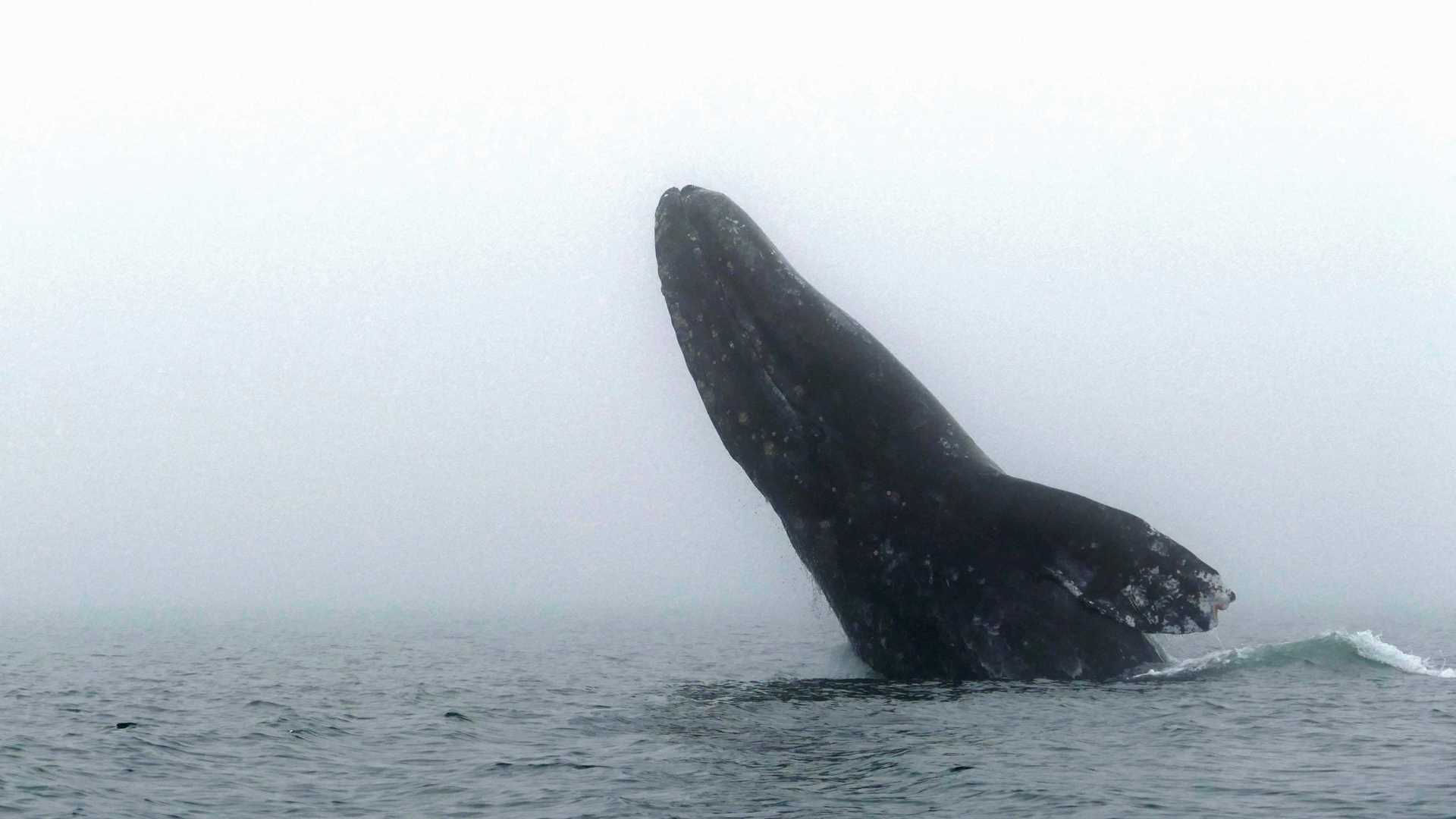Early this morning neblina (fog) softly enveloped the National Geographic Sea Bird, making the roar of the Pacific surf and the sharp blows of whales’ breath especially audible. Out in our small boats we found the whales by stopping and listening for their breath. Today we watched at least a dozen single California gray whales—some were pregnant, soon to give birth to their 15-foot, thousand-pound offspring, while others were in courting groups, males chasing females about the lagoon and occasionally throwing their flukes skyward or engaging in a breach!
Mother whales with newborn calves were abundant as well, and many of us observed what was likely nursing behavior with the mothers lying calmly at the surface while their flexible little calves dove beneath them. The female gray whales produce about 50 gallons a day of very high fat milk and over the season can lose 30 percent of their body fat. They’ll stay here about two months before heading north again on their incredible migration to their subarctic summer feeding grounds in the Bering and Chukchi Seas.







